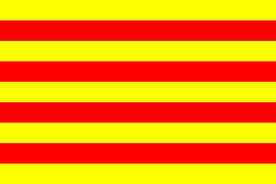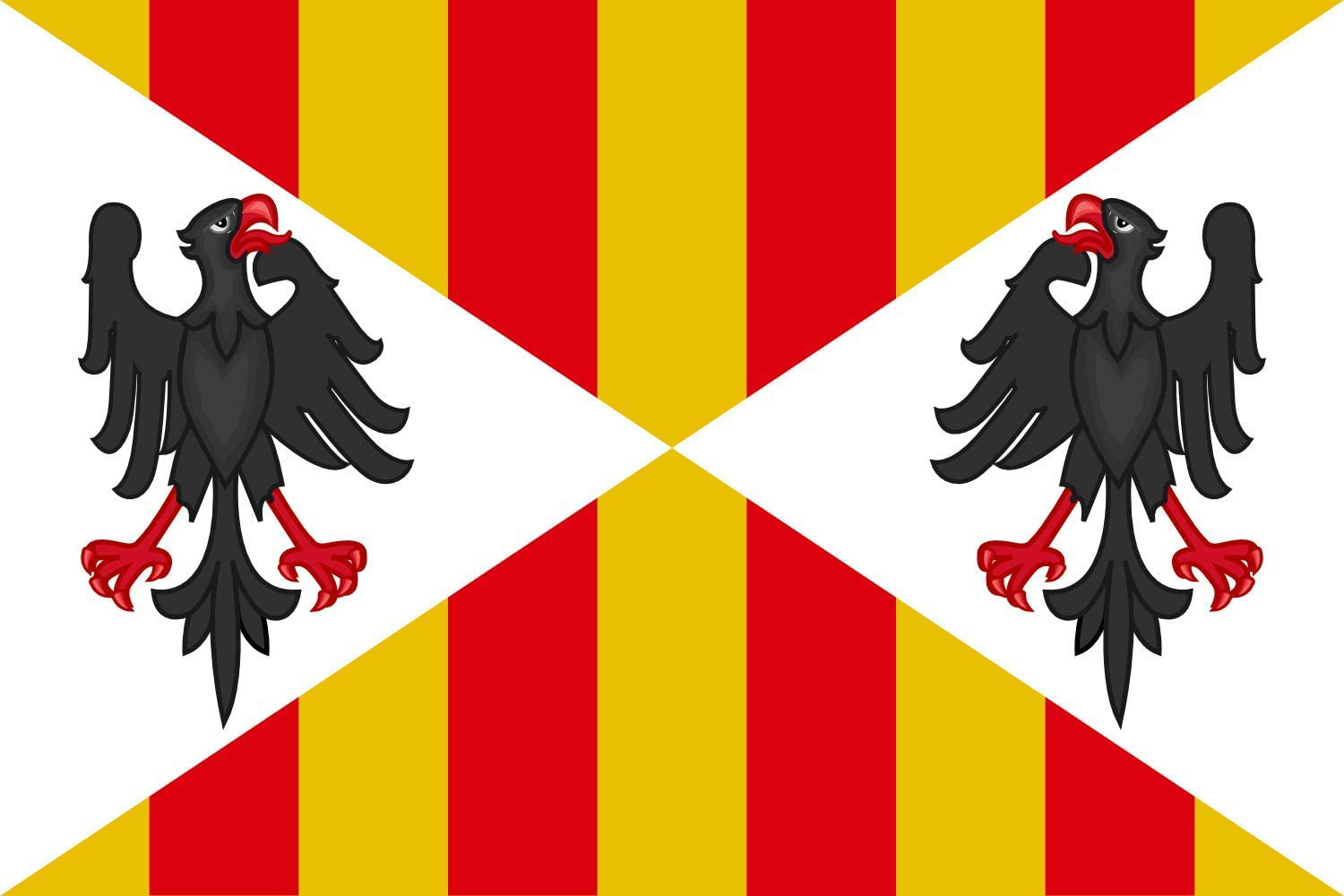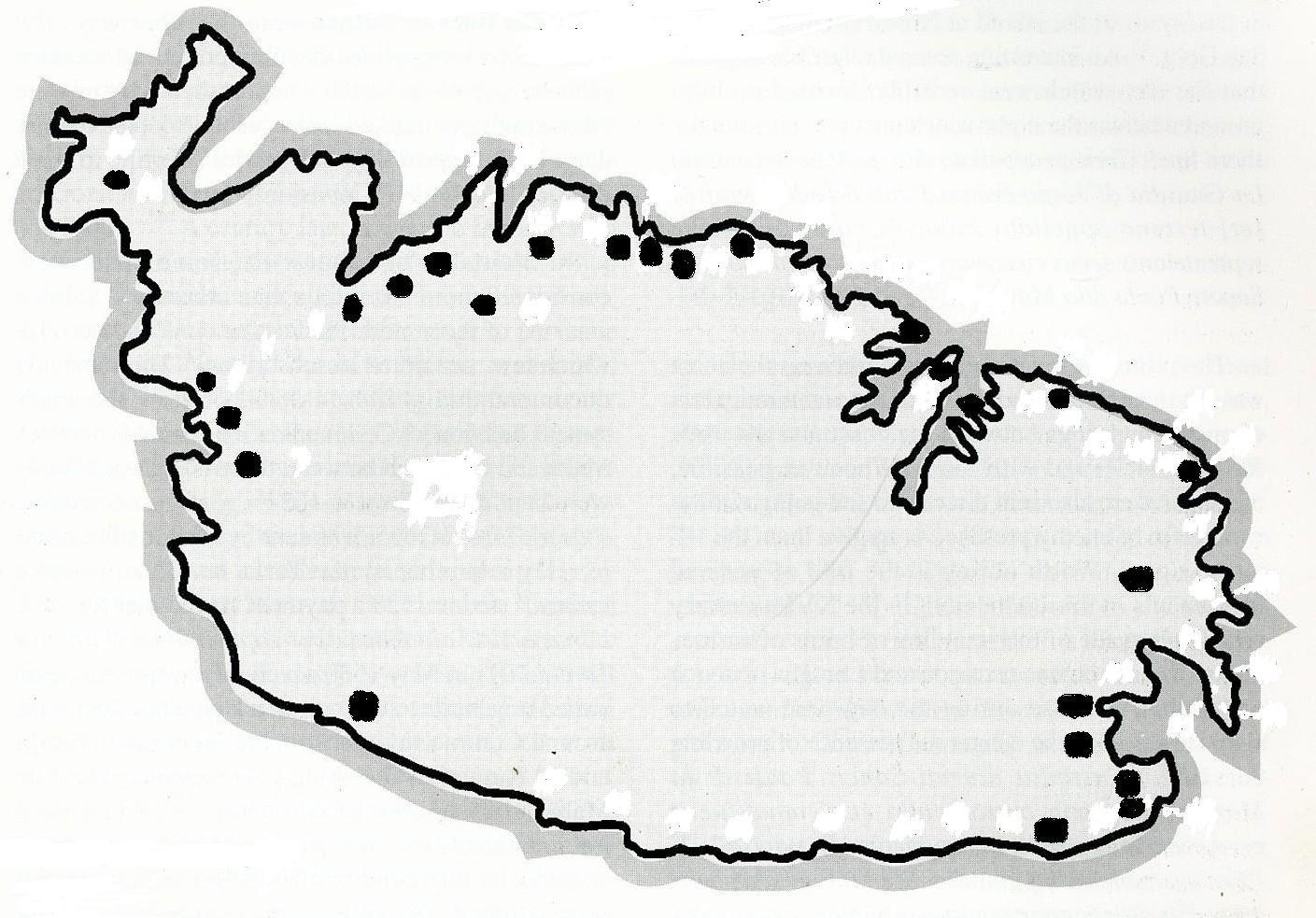THE COASTAL DEFENCES OF MALTA DURING THE LATE MEDIEVAL PERIOD
Two papers published by Prof. Godfrey Wettinger about the Militia of the Late Medieval Period. The second paper dealt with the Militia Roster of 1417, which showed all the night and daily watch-posts of the period, while the Militia List of 1419-20 showed all villages and towns and how many men they provided for the coastal defence of Malta. The Militia Roster of 1417 listed a network of some 24 posts night watches. And that the northern part of Malta beyond St. Paul’s Bay were abandoned. This is the reason why Mellieħa is not mentioned. This village was considered the most dangerous place in Malta, as they were frequently attacked by the Moors.
In order to understand the defence of the Maltese islands we have to know what the political situation at that time was. The Maltese islands from the mid- 14th century to early 16th century were part of the Aragonese/Catalan Crown, later becoming the Spanish empire. The local administration, including the Universitas, was based on that of Sicily. As the Maltese islands were frequently attacked by Moorish corsairs it was felt necessary to maintain an adequate system of defence to alert the inhabitants of an enemy attack. This was also based on Sicilian one.

The Flag of the Aragonese-Catalan Crown.

The Flag of the Kingdom of Sicily.
It was the commitment of the inhabitants to serve in the defence and coastal guard of Malta and Gozo. This militia was divided into two organisations: the coastal-watch called Għassa or better known as Maħras (or Guardìa, from where the named Wardija is derived) which was maintained all year. Dejma was a village-based Militia, formed only in early summer and autumn, when there was more danger of a Muslim attack
The late 14th century was a time also when an organised form of local government, the Universitas, was established. The earlier form of government was always vested in one or two persons appointed by the King when the islands were reintegrated within the royal demanium in 1351. Both Islands had separate Universitas. The Maltese Universitas had, apart from many duties, the defence of the Island. It was on 17 April 1366 that the first step was taken, when Jacobus de Peregrino (or Pellegrino), was appointed a knight to the office of the Captaincy with cognition of criminal cases for the islands of Malta and Gozo and their Castellany for life in the usual form.
The late 14th century was a time also when an organised form of local government, the Universitas, was established. The earlier form of government was always vested in one or two persons appointed by the King when the islands were reintegrated within the royal demanium in 1351. Both Islands had separate Universitas. The Maltese Universitas had, apart from many duties, the defence of the Island. It was on 17 April 1366 that the first step was taken, when Jacobus de Peregrino (or Pellegrino), was appointed a knight to the office of the Captaincy with cognition of criminal cases for the islands of Malta and Gozo and their Castellany for life in the usual form.
It was during the mid-next decade, on 5 December 1375, that an official was appointed, certain Philippus de Marino, to organise the watch or custody of the island with the authority to appoint in his stead one or more in the said custody both in the city and island of Malta by day and by night for life with the rights and duties attached to the said post
Thanks to the discoveries and publications made by Prof. Wettinger, we have an idea of Maħras watch-posts in the second decade of the 15th century. The discoveries are divided into two published articles and one still unpublished. The first one is a Militia Roster of Watch Duties of 1417, which list all the men who had duty to keep watch along the Maltese coastline one night a week. Some of the names in the roster are preceded with the letter C1 which probably stands for militiamen mounted on a horse (a horseman).
There were 24 coastal watches altogether distributed around Malta. The watch kept inside and around Mdina was different from that of the coast. Small groups of men patrolled the walls

whilst others remained standby. There were permanent watch-posts at Santu Eramu, Benarrad and Cumaha and an unidentified one. A horseman was stationed at Castrum Maris (Fort St. Angelo), maybe to keep in contact with the three watch-posts
The Militia Roster of 1417 discusses all the watch-posts, both the night and daily ones. It said that there was a permanent watch-post at Cumaha, which Wettinger interpreted as Qammieħ at Mellieħa, not very far from or Comino Channel. Wettinger says that at Cumaha there was a permanent Militiaman. A horseman was stationed every night at the Castrum Maris, to maintain communications with Mdina ready to depart in case of Moorish ships approaching or landing in the north of Malta.
The Militia force at Civitas (Mdina) was divided into the ala plaza (who seems to be of different social stratum from the rest belonging to upper-crust Mdina families, including the city’s captain, the judge, notary, a sergeant and possibly a pipe-players or drummers to rally the militiamen) were in fact a reserve force to assist in time of emergency, while ali mura were the same as those keeping watch along the coast. They are interpreted by Prof. Stanley Fiorini as a force related to Dejma because later men from this force were used to man other watch-posts along the coast.
It was only during the Late Middle Ages that we have documentation on the construction of watch-towers or what remains of them. It seems that sometime after 1417 and 1419-20, a watch-tower was constructed in around this area. It is said that at Mellieħa there was a place called Burgio Torre, and Gian Francesco Abela says that by 1647 there were the ruins of an old watch-tower.